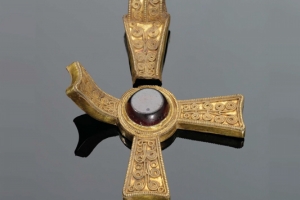Religion and Politics in the Kingdom of Mercia
THE LANDS OF ST CHAD
When the rulers of the Anglo-Saxons began to turn themselves into Christian kings from the late sixth century, they were joining a club already peopled by the most successful of the European kingdoms that had emerged from the wreckage of the Western Empire in the fifth century.
Mercia became one of these new Christian monarchies.
Religious authority was moulded over political power, and amongst the Anglo-Saxons one bishop was initially appointed to minister to each kingdom. Thus, when the Christian King Oswiu of Northumbria defeated and killed the pagan King Penda of Mercia in 655 AD, he created a single bishopric to serve this newly-conquered realm. This article explores its history during the seventh, eighth and ninth centuries, when it formed the primary diocese of the kingdom of Mercia.
Bede, the Northumbrian monk who wrote his Ecclesiastical History of the English Church and People in about 730, described two primary conduits of the Christian religion into Anglo-Saxon society. These were a Roman mission sent by Pope Gregory the Great which had arrived in Kent in 597, and an Irish mission established at Lindisfarne in 634 by King Oswald of Northumbria, who desired in part to override the Roman bishopric established at York by his predecessor and rival, Edwin.
KEYWORDS: Anglo Saxons, Mercia, Christianity, Saints, Saint Chad, Offa, Churches, Lichfield, Books
Download the Full Article (PDF)Categories:







